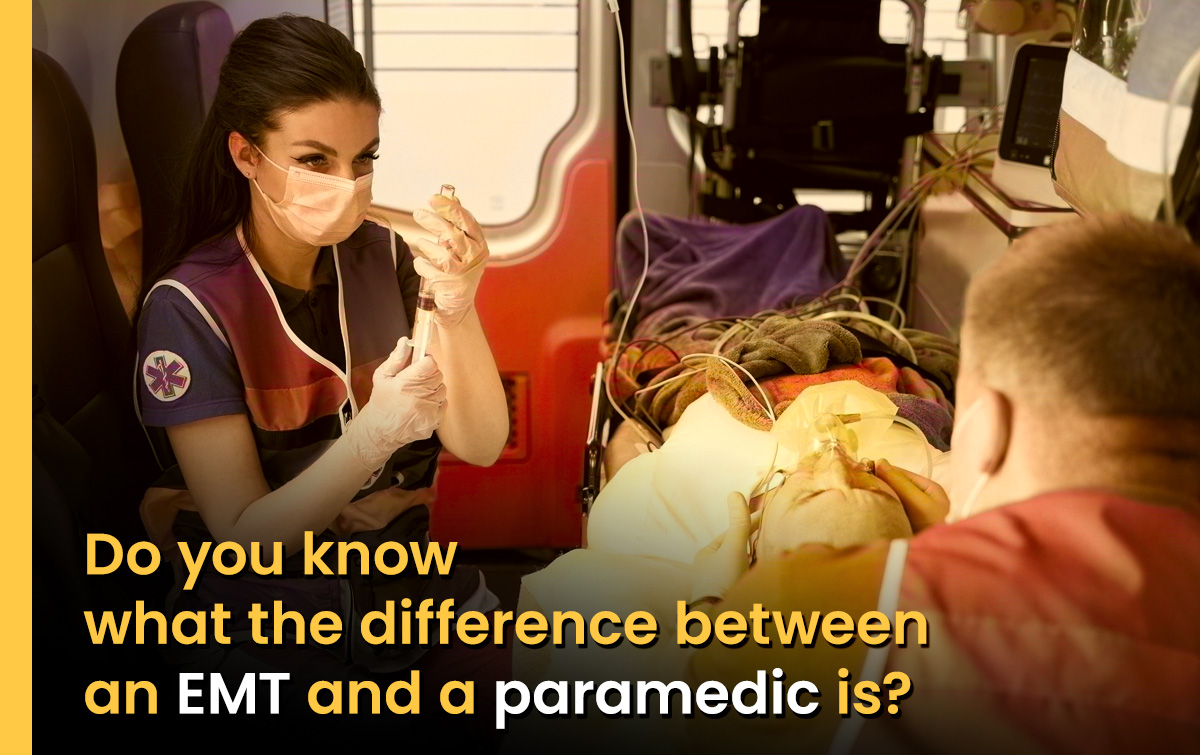News
Latest News
April 16, 2024

The sudden cardiac arrest chain of survival includes six steps:
Activation of Emergency Response
Early CPR
Rapid Defibrillation
Advanced Resuscitation by Emergency Medical Services
Post Cardiac Arrest Care
Recovery
While it is crucial that the first three steps occur before an ambulance arrives, the fourth link, advanced resuscitation by Emergency Medical Services is vital to high survival rates. When the ambulance shows up, EMTs and/or Paramedics are going to work together to take the next life-saving steps. EMTs and paramedics can both provide life-saving skills but they go through different training and can do different things.
EMT stands for Emergency Medical Technician. An EMT responds to 9-1-1 calls and is trained to respond to other life-threatening situations. They are educated to assess a patient and determine if any life-threatening injuries or illnesses are present. Some EMT skills include, but are not limited to:
-Providing oxygen
-Performing CPR
-Using an AED
-Administering epinephrine
-Using Narcan
-Splinting a broken bone
-Stabilizing a patient
-Delivery of a newborn
-Bag Valve Mask Ventilations
Paramedics are also emergency medical responders and they provide patients with immediate, life-saving care. The training to become a paramedic is more extensive than that of an EMT. Some of the topics covered for paramedics include anatomy and physiology, cardiology, medications, and medicine procedures. Paramedics can perform more advanced procedures and even offer advanced life support. Some things paramedics do that EMTs do not include, but are not limited to:
-Interpreting an electrocardiogram (EKG) to diagnose and treat a heart attack or cardiac arrest
-Perform intubations
-Administering medication
-Starting an intravenous line
-Advanced airway management
While this may vary by state, here are the requirements for the state of Connecticut:
-Must be at least 16-years old
-Successful completion of an Office of Emergency Services (OEMS) approved Emergency Medical Technician training program.
-Minimum of 150 hours of written and practical examinations
-Completion of the Connecticut OEMS approved psychomotor examination
-Completion of the National Registry EMT (NREMT) written exam
Across the United States, you must be 18-years old to become a paramedic, hold a valid EMT certification, and have a high school diploma or something equivalent. In the state of Connecticut, all applicants must:
-Complete an OEMS approved paramedic training. This training can average about 1800 hours of hybrid, didactic, clinical, and field internship.
-Complete the NREMT Paramedic Psychomotor and Cognitive Examination
-Complete a Mental Health First Aid Training program by a National Council for Behavioral Health certified instructor or another program approved by the Connecticut Department of Health.
To learn more about Defibtech and to join us on our quest to save lives from sudden cardiac arrest, visit www.Defibtech.com.
Sources:
https://www.nu.edu/blog/difference-between-emts-and-paramedics/
https://portal.ct.gov/DPH/Emergency-Medical-Services/Licensing--Certificaton/EMT-Certification-by-Examination#:~:text=Successful%20completion%20of%20an%20OEMS,the%20NREMT%20EMT%20cognitive%20examination.
https://portal.ct.gov/DPH/Emergency-Medical-Services/Licensing--Certificaton/Paramedic-Licensure-by-Examination
https://www.ynhh.org/medical-professionals/EMS/training/Paramedic#:~:text=Eligibility%2C%20Application%20Process%20and%20Tuition,high%20school%20diploma%20or%20equivalent.
https://www.cpc.mednet.ucla.edu/node/